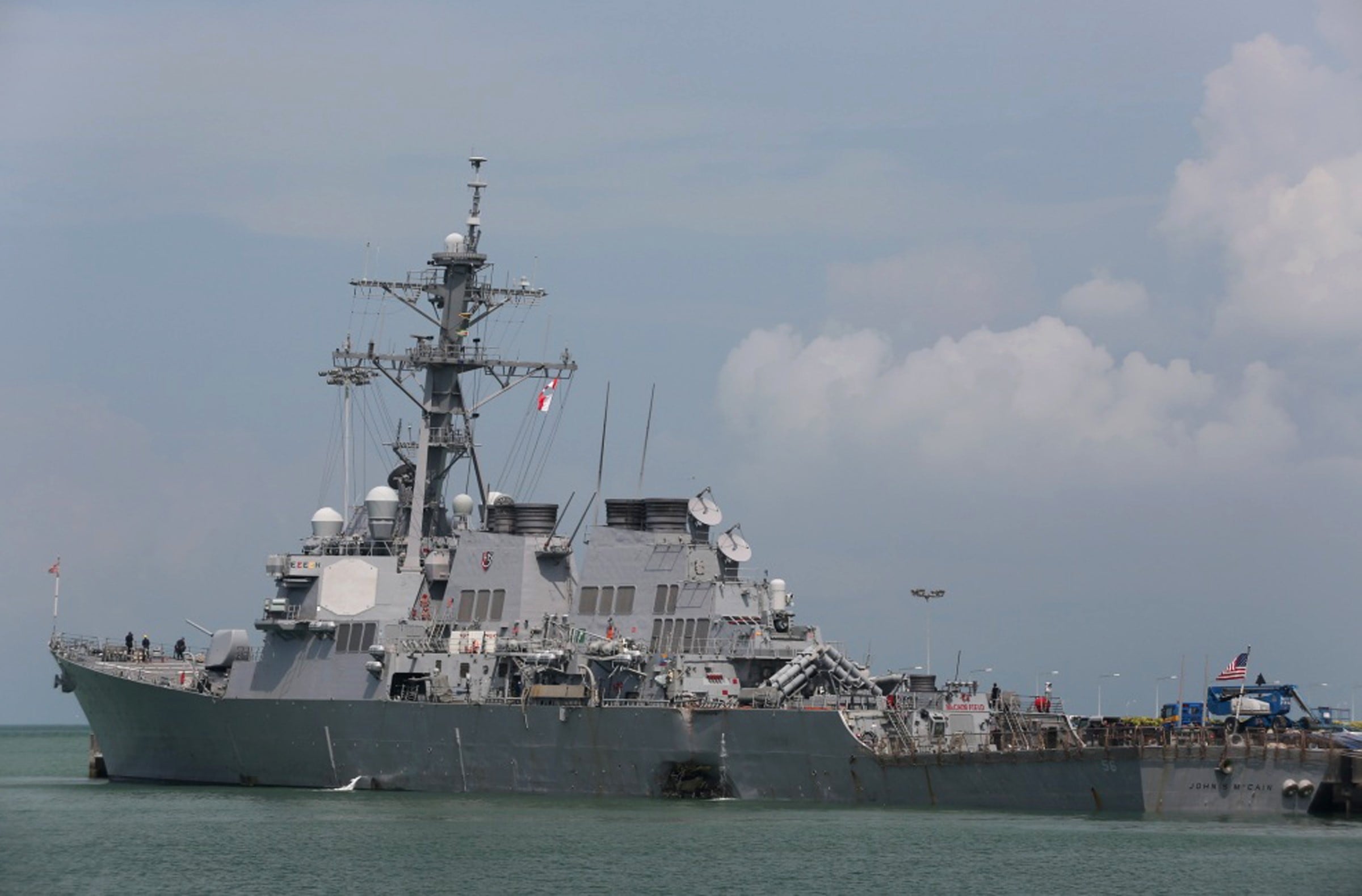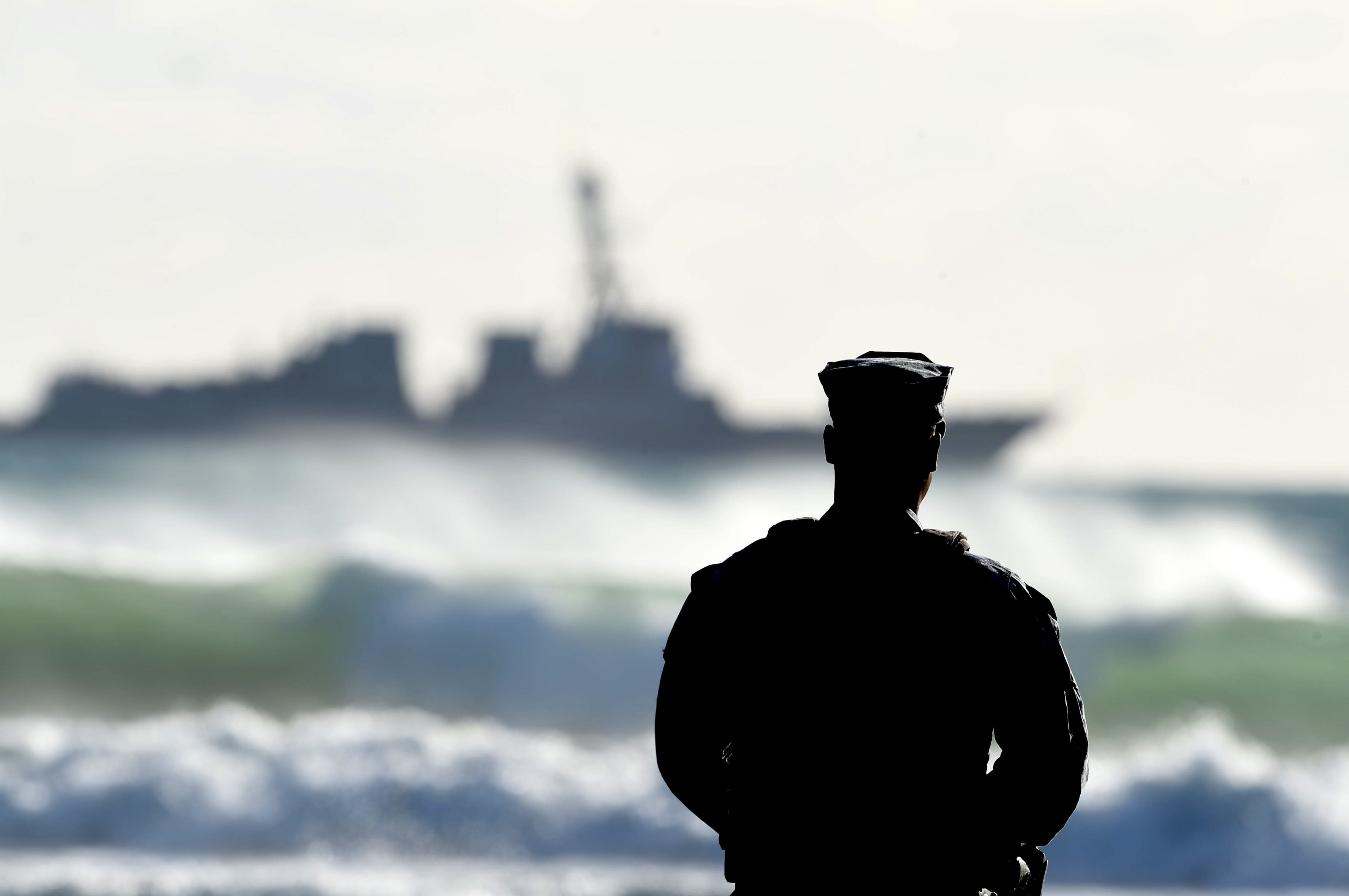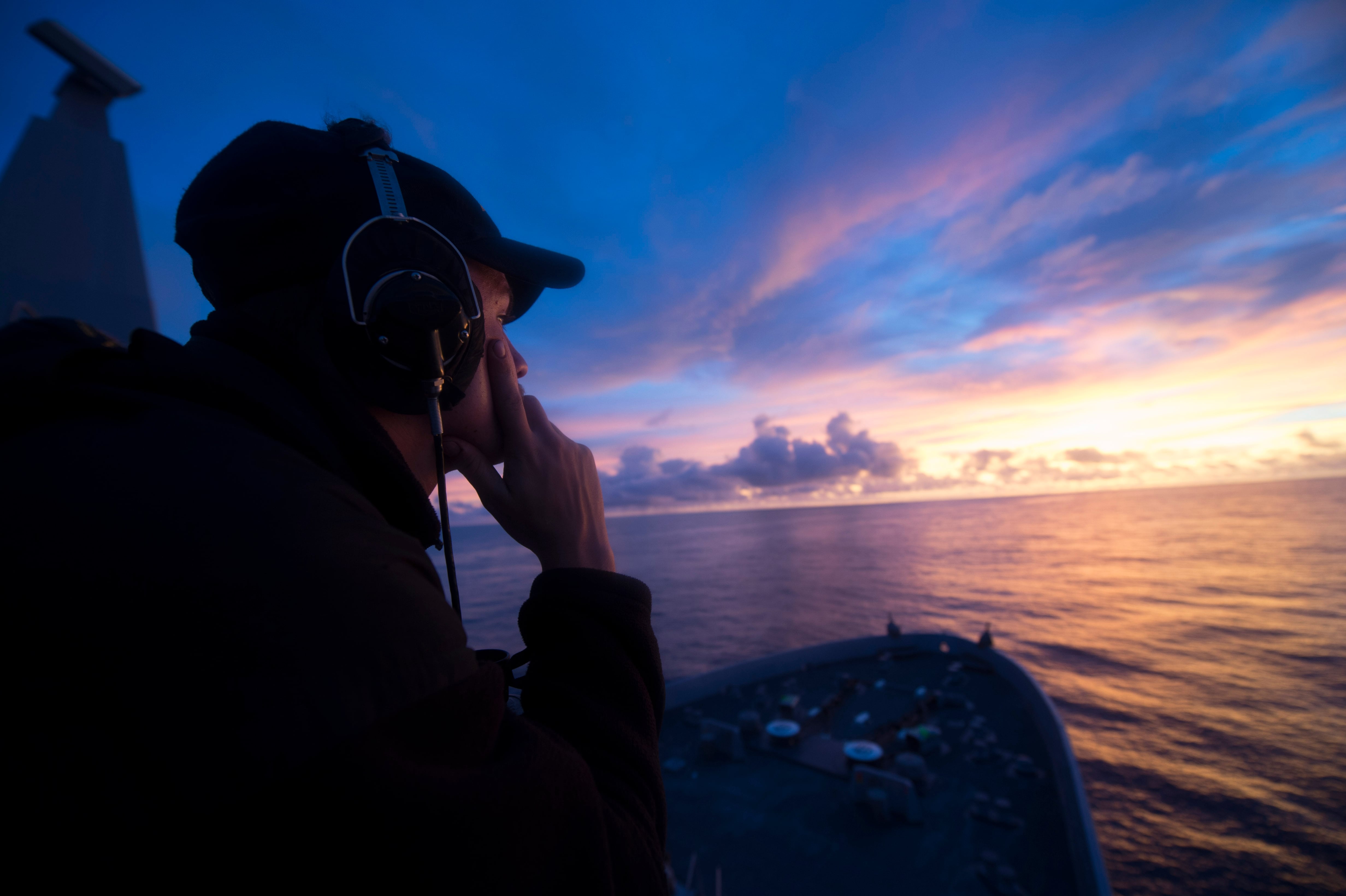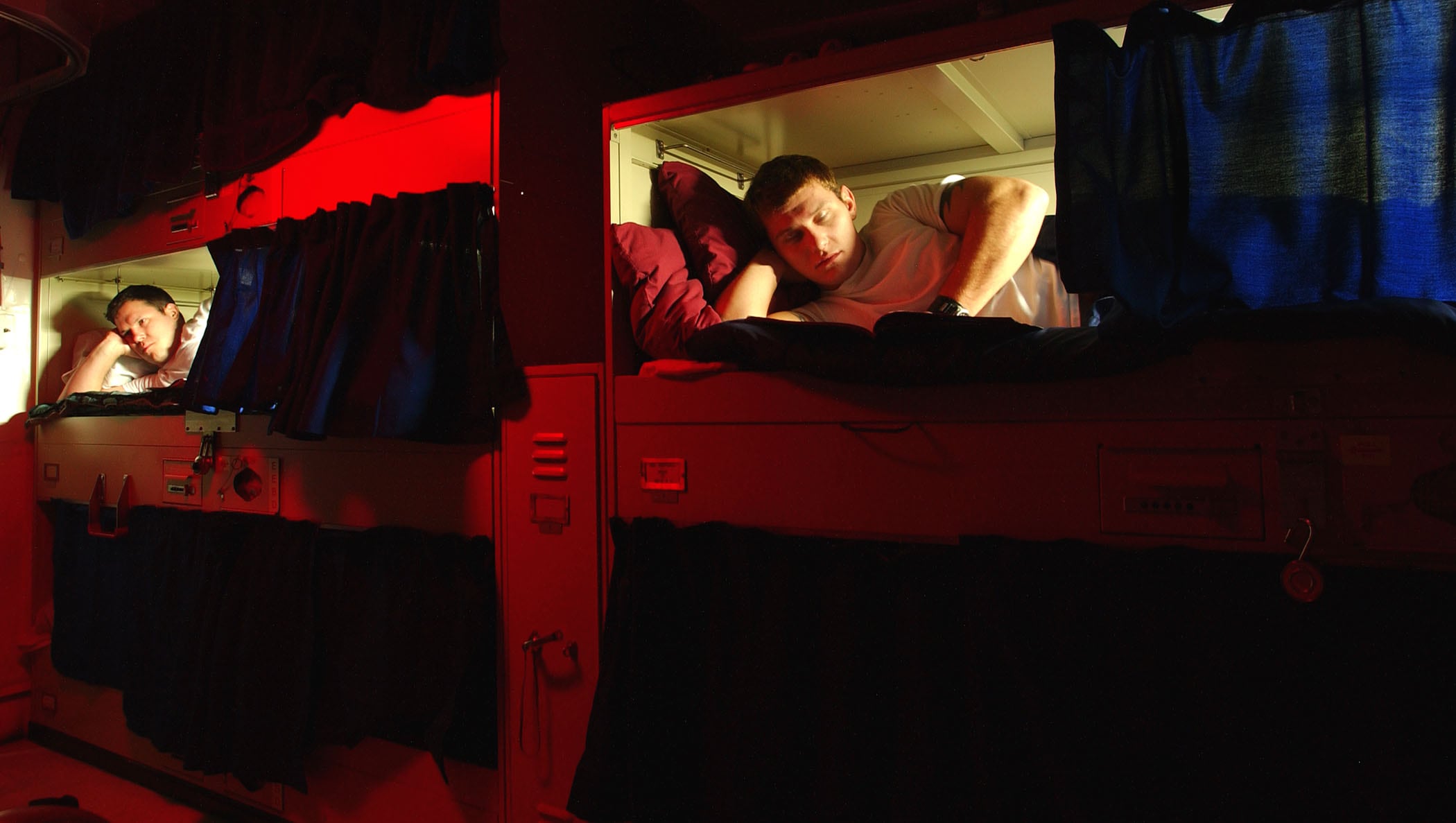On a deployed Navy ship, a sailor’s day allows little time for sleep.
In port, it doesn’t get any easier. The day might start with an armed watch from 7 a.m. to noon, followed by continued duties well into the evening. The sailor might have to squeeze in some duty section training and a drill before clocking another armed watch from 10 p.m. to 2 a.m.
“That sailor would be lucky to get any sleep during that duty day, and then work a full work day the following day,” said one senior chief with 20 years of surface warfare experience.
Work days on a deployed ship often involve lengthy periods of exertion with long watch shifts stacked throughout.
“Before you know it, you are back on watch, tired as hell, and your biggest challenge at that point is trying to stay awake and focus on your screen, or just standing proper watch,” said the senior chief, who asked not to be identified due to his active duty status. “Sailors are tired and stressed.”
As the Navy continues its review of how it conducts basic operations in the wake of the fatal Fitzgerald and John S. McCain at-sea collisions this summer, sleep among crews — specifically a lack thereof — continues to raise eyebrows for those concerned with readiness.
RELATED

While the Navy’s aviation and submariner communities have regulations governing sleep, no formal guidance exists for surface combatants.
Current and former sailors, as well as researchers who study sleep, attribute the ship crews’ lack of rest to insufficient manning levels, too few qualified sailors, misguided focus on non-warfighting tasks and, as the senior chief put it, “all the BS once ships are back in port.”
A shortage of sleep is something that drew attention from Rep. Rob Wittman, R-Va., the chairman of the Seapower and Projection Forces Subcommittee of the House Armed Services Committee, when he traveled to Japan for a recent visit with the fleet.
He said sailors told him that crew rest and a lack of sleep might be an important factor in the latest collisions.
“Talking to folks at the deck-plate levels, I do believe that it’s a contributory factor,” Portman told Defense News in a recent interview.
“I think the Navy’s going to have to really do some soul-searching about how they do those things, and I understand that the demand signal that comes from around the globe, you know, gets a vote in all of this,” he said.
Still, Portman conceded there is not always an alternative.
“So the sailors that are there are being asked to do things at a significantly increased pace,” he said. “But we have to understand, too, that there are limitations to what we can ask for.”
Some sailors say the glut of paperwork and collateral duties make standing watch and the day-to-day duties on a ship that much more exhausting.
In an effort to get crews focused on warfighting, the Navy announced this summer the elimination of seven collateral duties, with an ongoing review looking to cut even more.
When it comes to manning issues and the effect on crew rest and readiness, Master Chief Petty Officer of the Navy Steven Giordano admitted recently that no easy fix exists.
“We don’t want you out there operating with reduced manning at a level that has you working 100-hour plus weeks,” he said at a recent all-hands meeting Japan, according to Stars and Stripes.
SKIPPERS NEED FLEXIBILITY
Military life is generally busy, and operational tempo can be relentless while underway, particularly in the West Pacific waters of 7th Fleet, where the two destroyers suffered the collisions that killed 17 sailors in total.
Deployments have gotten longer and the day-to-day grind becomes uniquely taxing when watch shifts of three to five hours come on top of regular duties.
A rotating watch schedule means crews often are not going to sleep and waking up at the same time each day, according to sailors and analysts.

But establishing reliable watch rotations can better prepare sailors for those exhausting crises, according to Dr. Nita Shattuck, a Naval Postgraduate School professor who has conducted sleep studies with 25 crews over the past 16 years. She advocates for circadian-based watch rotations that more closely align with a natural, 24-hour sleep cycle.
For now, surface ship skippers have latitude in setting up watch schedules, but Shattuck said she thinks the Navy will enact formal regulations on the matter in the future.
“If you would’ve asked me 10 years ago…I would’ve said, no, Navy’s never going to change,” she said. “But I’m optimistic. There’s much more attention to this and much more concern.”
At the same time, the Navy shouldn’t rush to codify watch regs for ships underway that require a degree of flexibility, Shattuck said.
“You have to be careful,” she said. “You don’t want to make things worse.”
While there are no schedules mandated to skippers, Navy officials say the surface community has encouraged implementation of innovative watch rotations and daily routines to maximize effectiveness.
Several ships in the fleet are already on watch cycles that offer more rest between watches while enabling a more predictable, static work and watch cycle, according to a Naval Surfaces Forces statement.
For example, the cruiser Shiloh is implementing a new circadian rhythm schedule during its current underway that aims to get sailors sleeping at the same time each day, keeping the crew alert and focused during work hours, Navy officials said.
Some 77 percent of commanding officers approve of a circadian rhythm-based schedule, according to the statement.
Still, not all ships are able to implement such watch schedules to the same degree, and ships undergoing training cycles appear to have more difficulty, as do smaller ships that have fewer watchstanders on hand to man all stations, according to SURFOR.
The Navy has identified no clear cause to the Fitz and McCain collisions, and the circumstances surrounding the incidents remain under investigation. Exhaustion, however, has played a role in other at-sea incidents, according to a 2013 Naval Surface Forces message sent to subordinate fleets.
RELATED

“Afloat mishap reports often cite watchstander fatigue as a contributing, often causal, factor in collisions, groundings, and other unfortunate events at sea,” the message states.
Crew rest is important, but the Navy should be careful about mandating rest schedules for the entire fleet and infringing on the flexibility of individual commanders, some former commanders say.
Jan van Tol, a retired skipper who works as an analyst with the Center for Strategic and Budgetary Assessments, commanded several warships during his career, including the amphibious assault ship Essex from 2003 to 2005.
He said he tried to be pragmatic when it came to crew rest and told everyone from department heads to work center supervisors that it was okay to let a sailor get a nap when fatigue set in.
Van Tol said he made sure understudies for different watch positions were always being trained, ensuring there was no shortage of qualified watchstanders, which can lead to a ship leaning too heavily on a handful of sailors.
“We always had understudies learning the next position senior to them, and on the watch team,” he said. “That flexibility was very helpful.”
MORE SAILORS NEEDED
Poorly executed manning reduction policies from the early 2000s led to shrinking ship crews. That required sailors to work more than 100 hours a week, creating safety risks in the process, according to a Government Accountability Office report to Congress this month.
The GAO pointed to a 2014 Navy study showing sailors on duty for 108 hours per week.
“This, in turn, reduced the time available for rest and resulted in sailors spending less time sleeping than was allotted, a situation that the study noted could encourage a poor safety culture,” the GAO warned.
The sea service continues to use a workweek standard that does not accurately reflect how much time sailors spend working, nor does it accurately account for in-port workload, according to the GAO.
Manning challenges will continue as the Navy seeks to grow the fleet.
“Until the Navy makes the needed changes, its ships may not have the right number and skill mix of sailors to maintain readiness and prevent overworking its sailors,” according to the GAO.
FINDING THE RIGHT SCHEDULE
The Navy has indicated it wants to find watch bill solutions that will offer sailors something less erratic and less exhausting than schedules that can include five hours on watch and 10 hours off, the so-called “five and dime.”
“We expect our sailors to operate and maintain complex equipment, in challenging environments, vital to ship operations,” the Navy’s 2013 message states. “We must also invest in the health, well-being, and safety of our sailors. One way of achieving this is to create a predictable watch rotation that recognizes the human circadian rhythm and supports a stable and repeatable pattern.”
The 2013 Surface Force message asks commanders for feedback regarding which watch rotations work best.
Sleep deprivation adds up fast, the message notes.
Going without sleep for 22 hours leads to a degree of impairment equivalent to a legally drunk blood alcohol level of 0.08.
“You would not operate your car under those conditions,” the message said. “Neither should we ask our crews to operate shipboard systems or navigate in a similar mental or physical state.”
The Surface Forces message notes that the aviation and submariner communities have embraced rest regulations as a foundation for safe operations, and “it has a place in the surface force as well.”
Circadian rhythms impact lives down to the cellular level.
Standing watch while underway affects this 24-hour rhythm, particularly when people aren’t sleeping and waking at the same time every day.
“We take it for granted while on shore duty or generally ignore it at sea,” the Surface Forces message states.
Finding a perfect watch rotation that would fit the various circumstances and deployments across the surface fleet is difficult, as different options contain advantages and drawbacks.
The command message notes that while three sections could support a four-hour on, eight-hour off rotation, time for sleep is limited and interruptions can have drastic effects.
Four sections on a three-hour on, nine-hour off watch schedule enjoy shorter watches, leading to greater focus, but entails more frequent watch turnover.
Four sections working six hours on, 18 hours off means a longer watch shift but only one shift a day, the message notes.
Some ships have pulled off a five hours on, 20 hours off rotation, but that requires five sections.
“What these rotations all have in common is a repetitive watch schedule that allows the body to establish a sleep pattern resulting in adequate rest, equating to greater alertness on watch,” the message states.
Geoff is the managing editor of Military Times, but he still loves writing stories. He covered Iraq and Afghanistan extensively and was a reporter at the Chicago Tribune. He welcomes any and all kinds of tips at geoffz@militarytimes.com.





